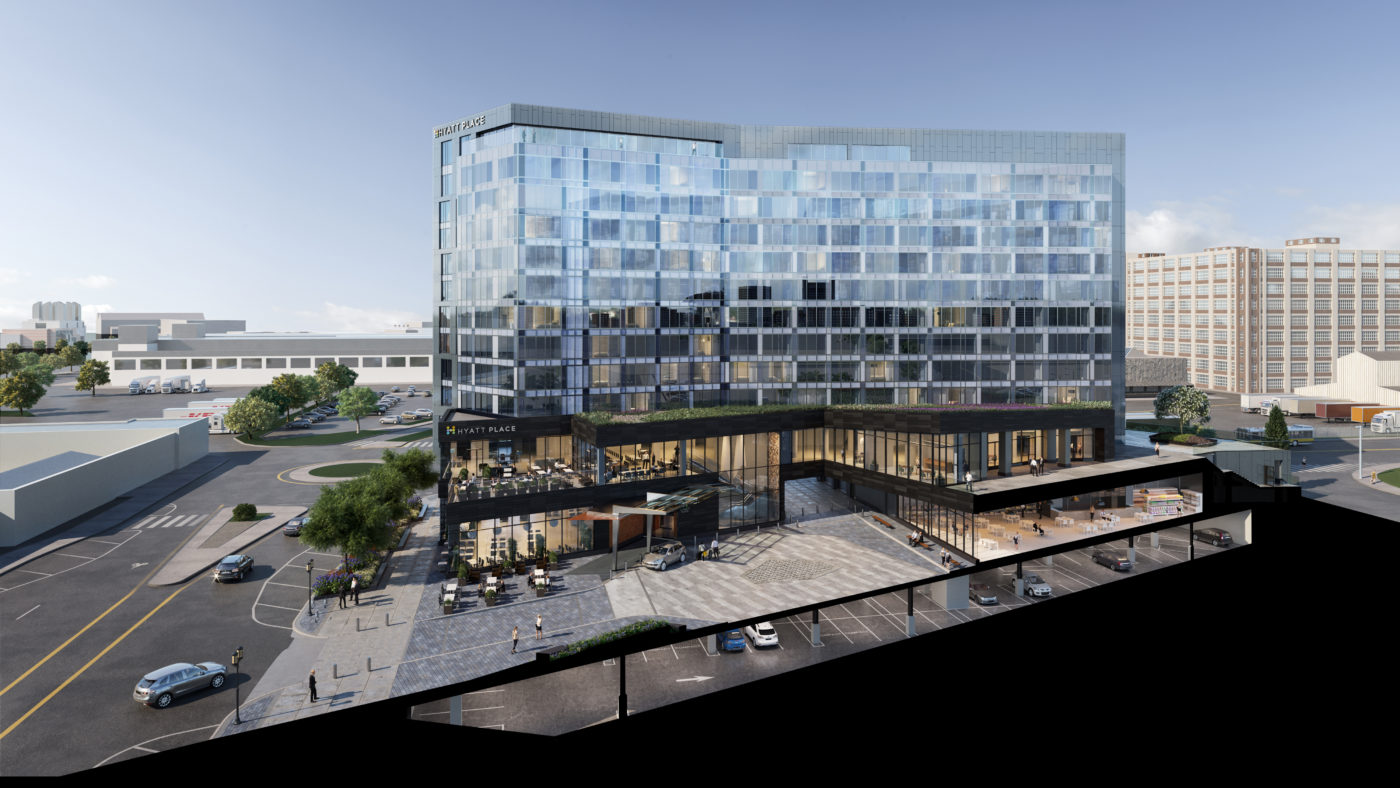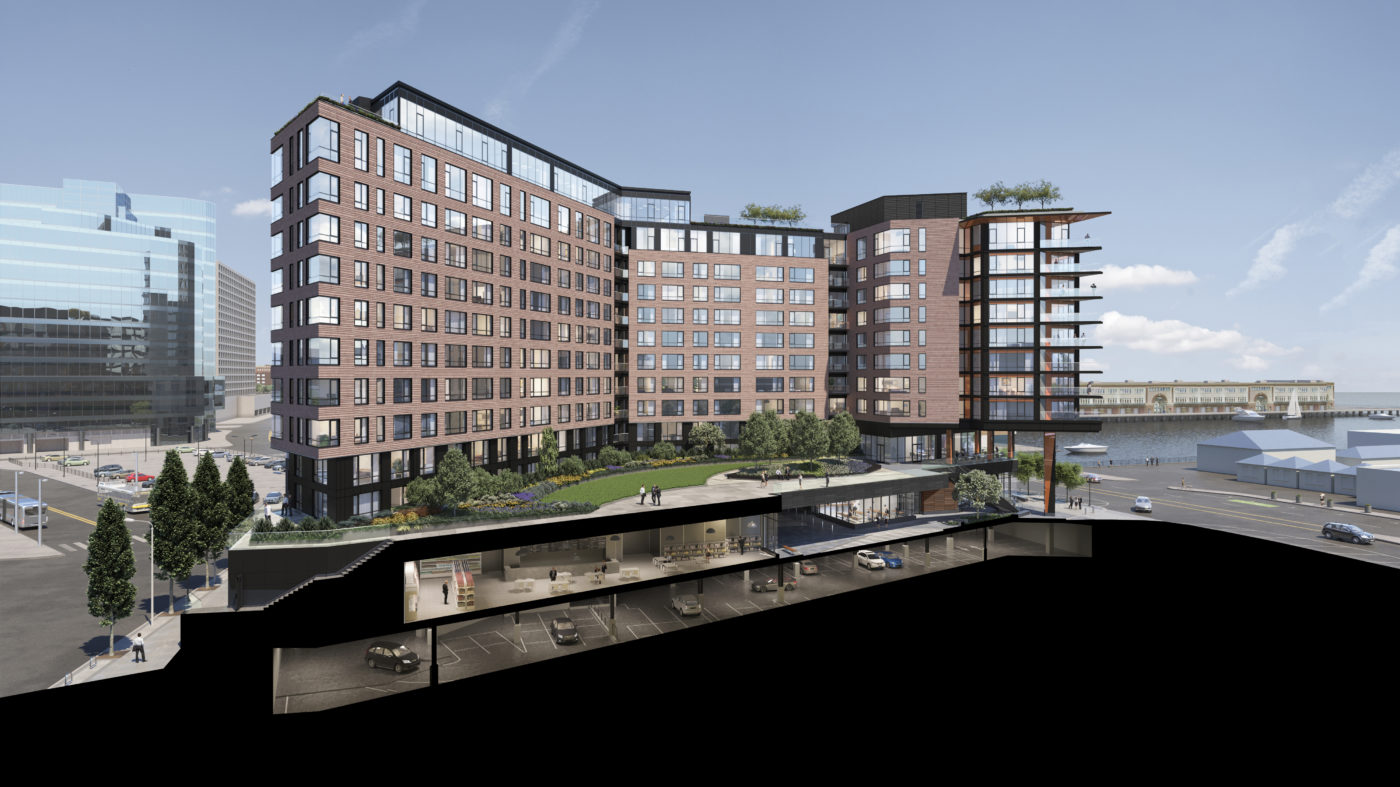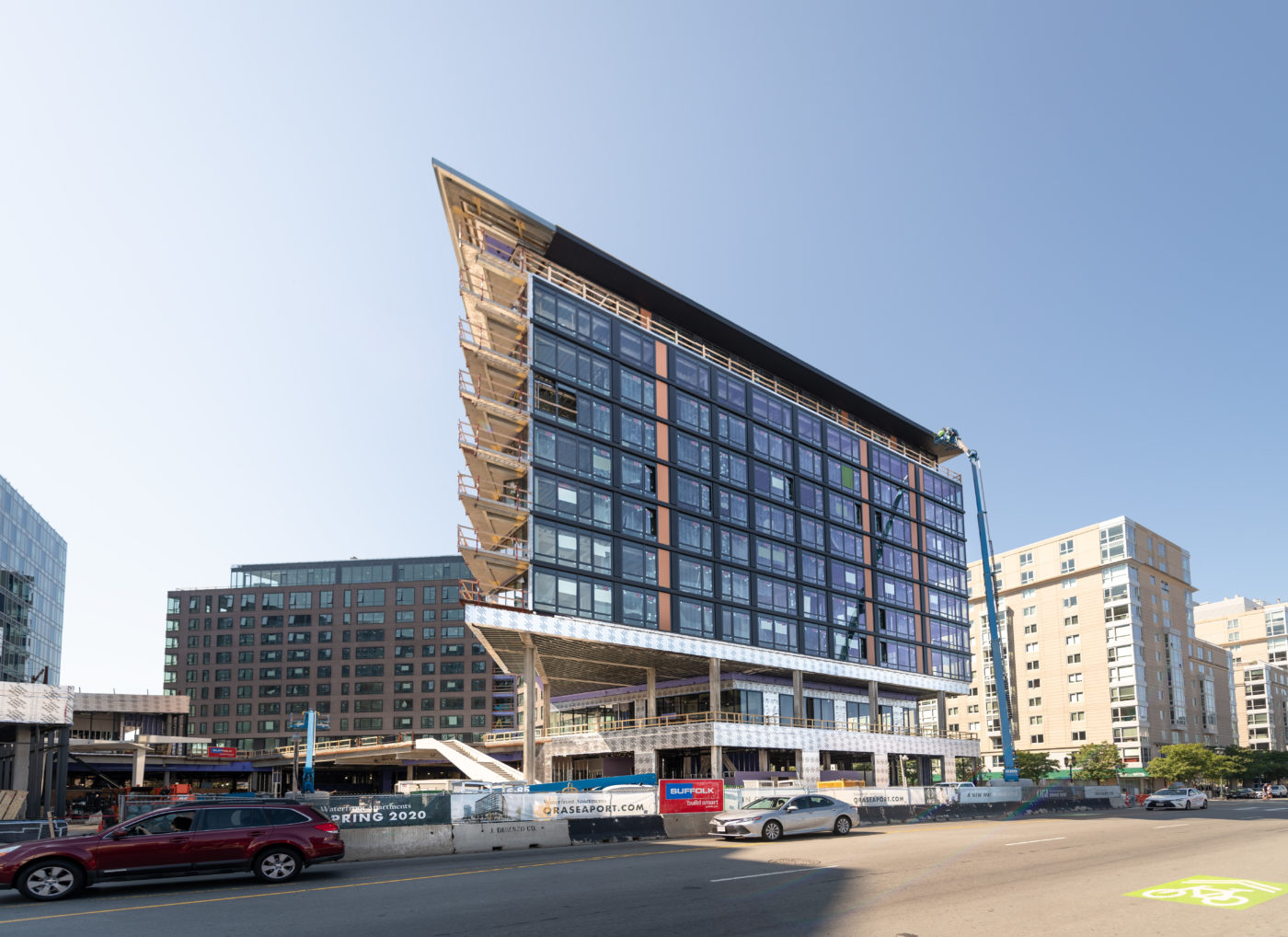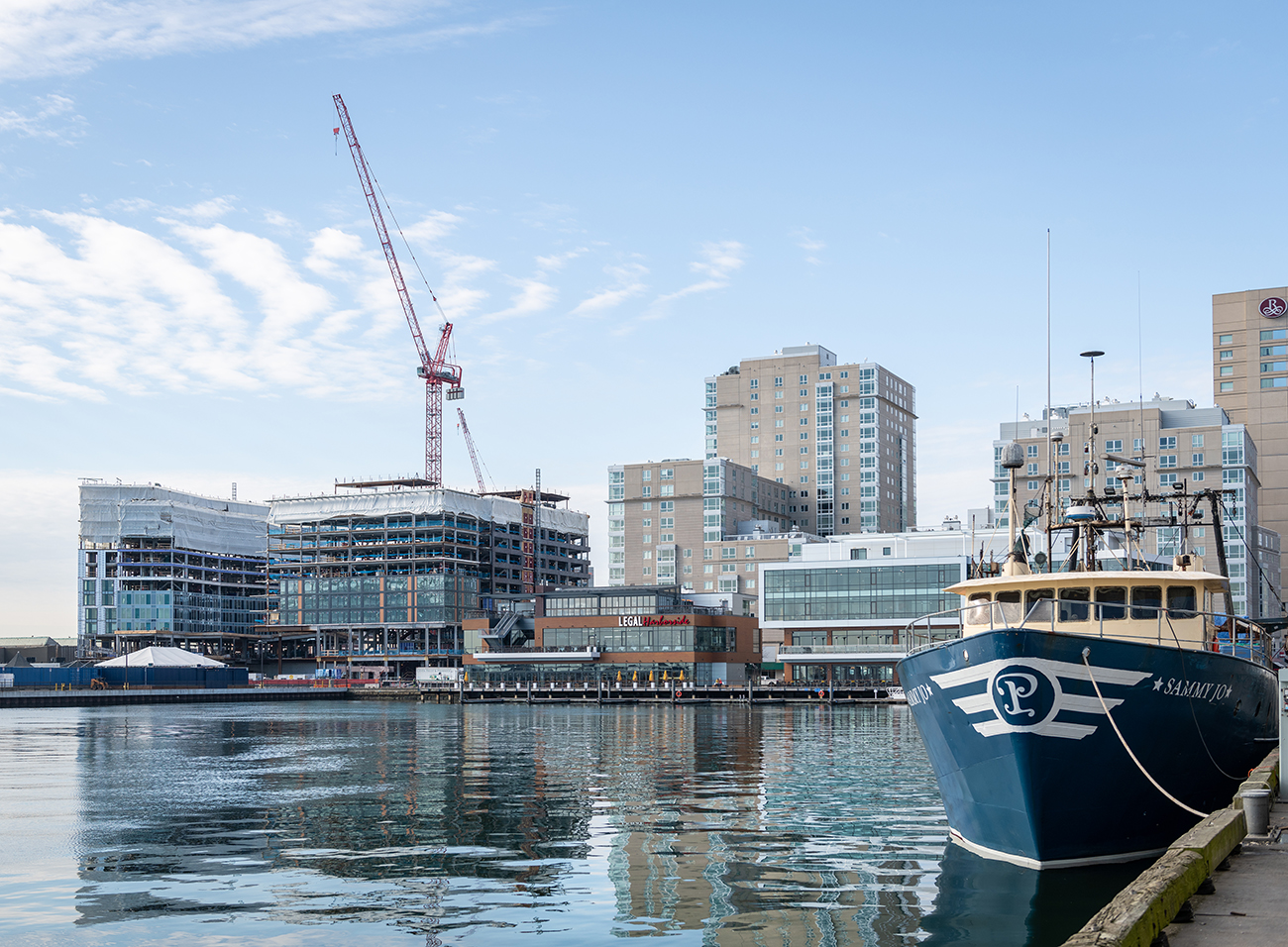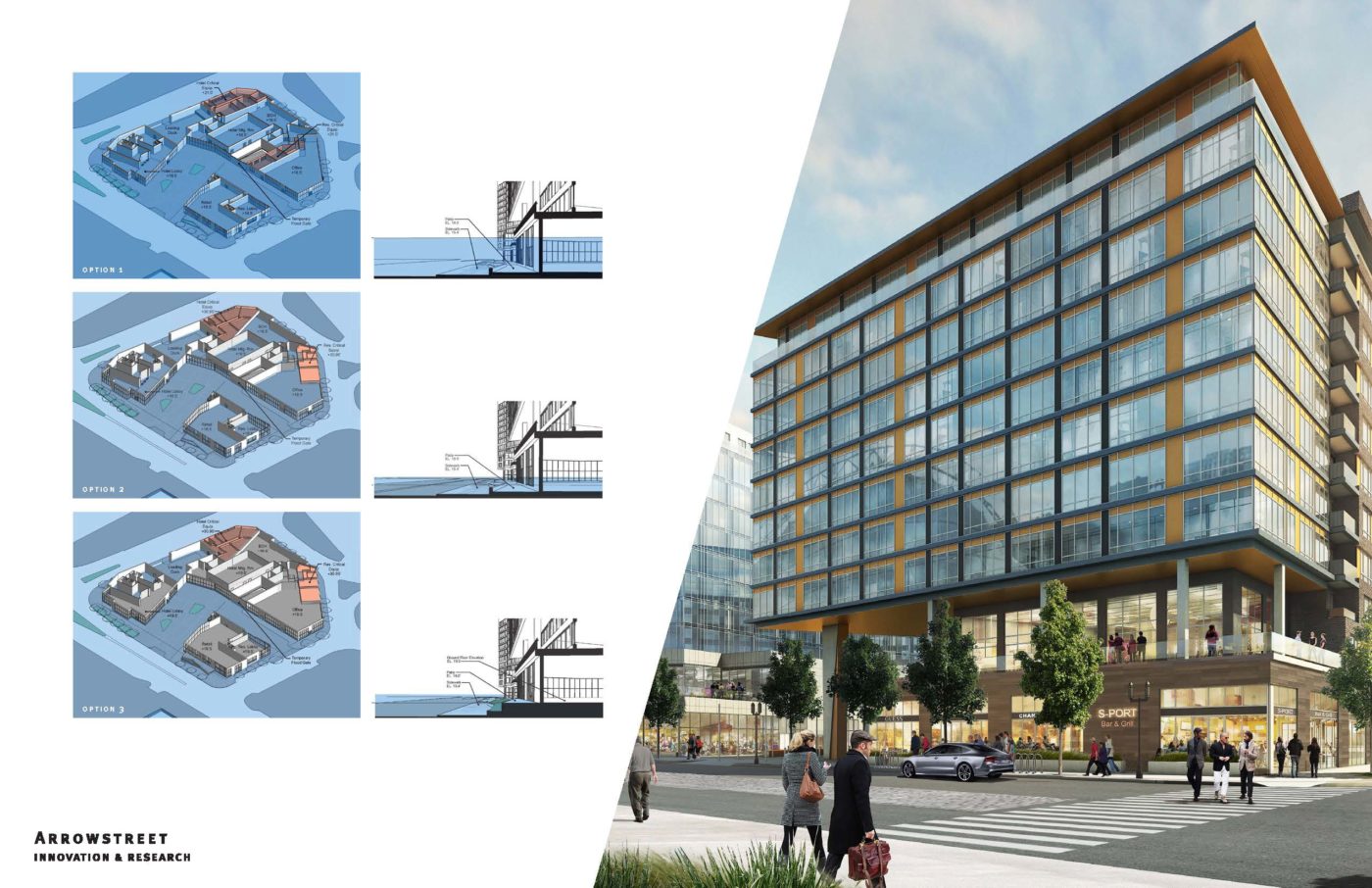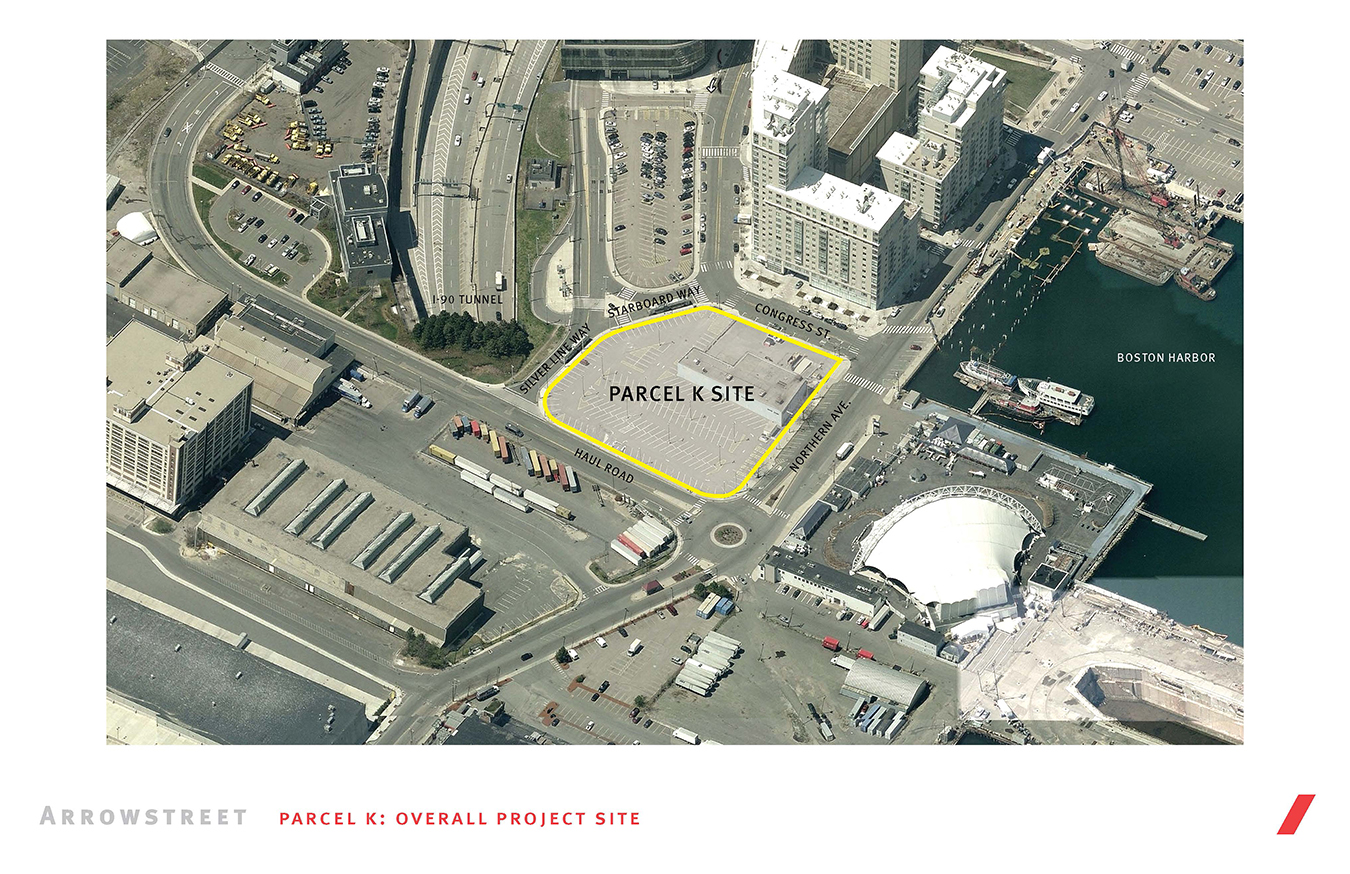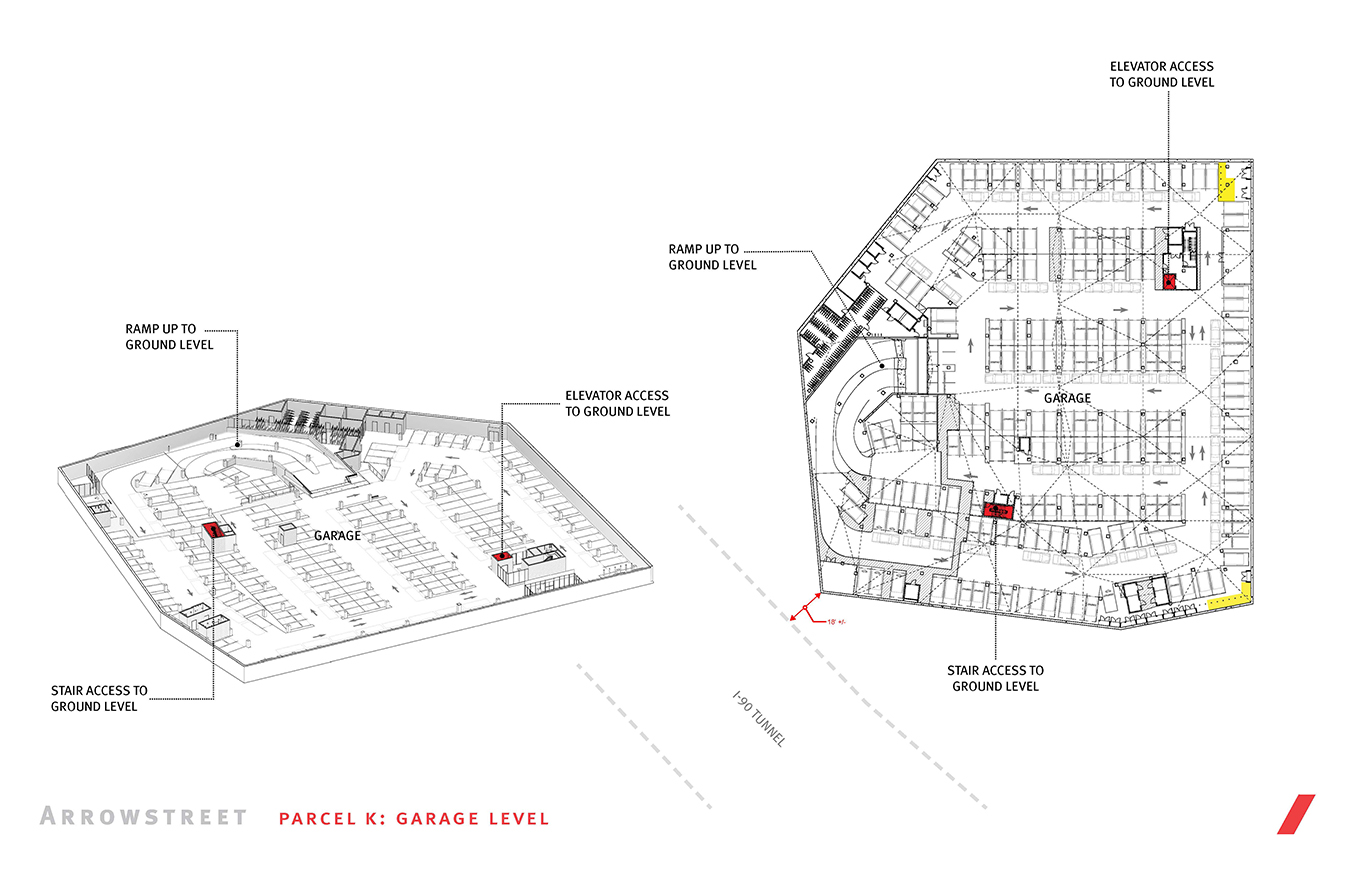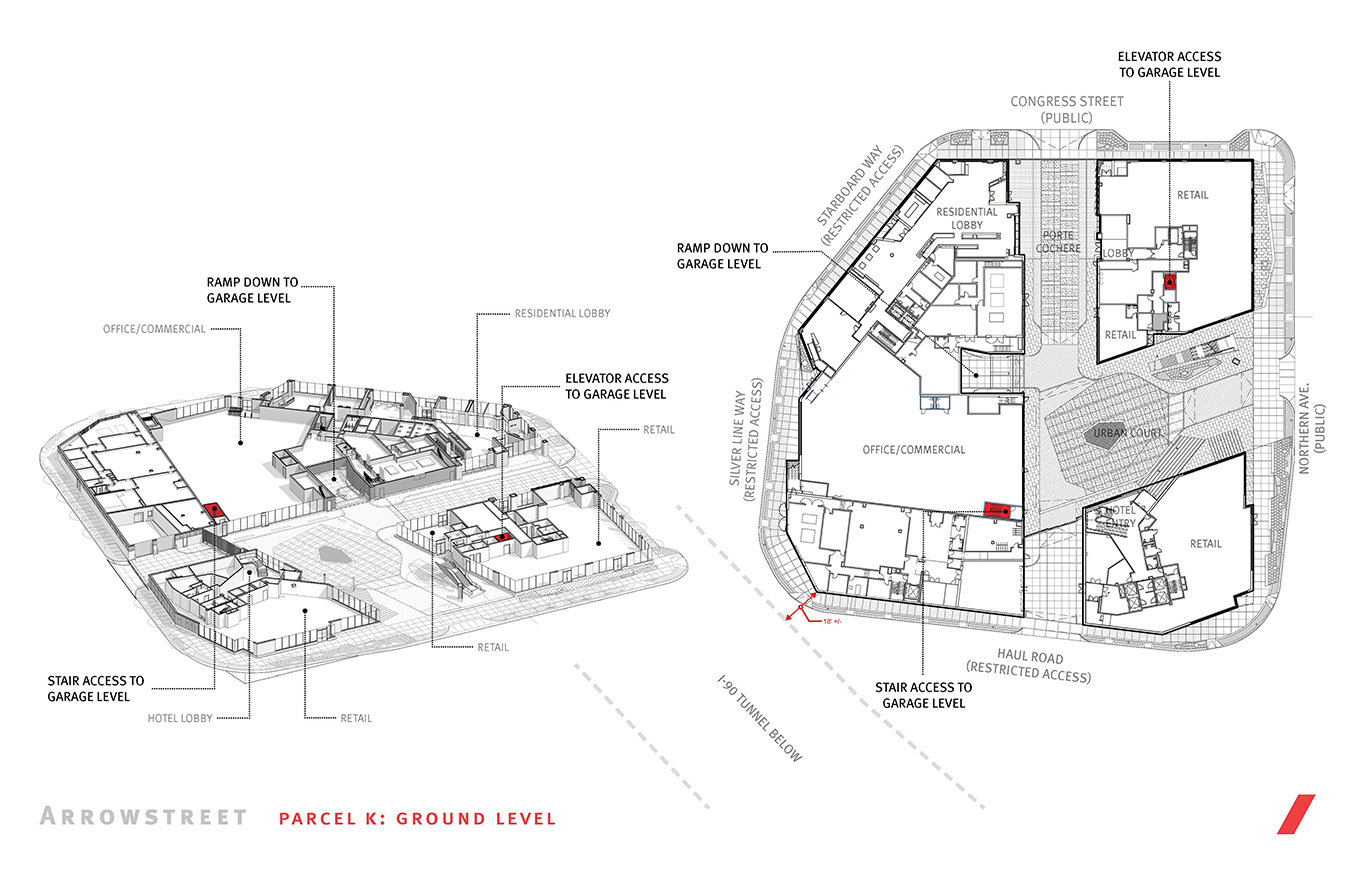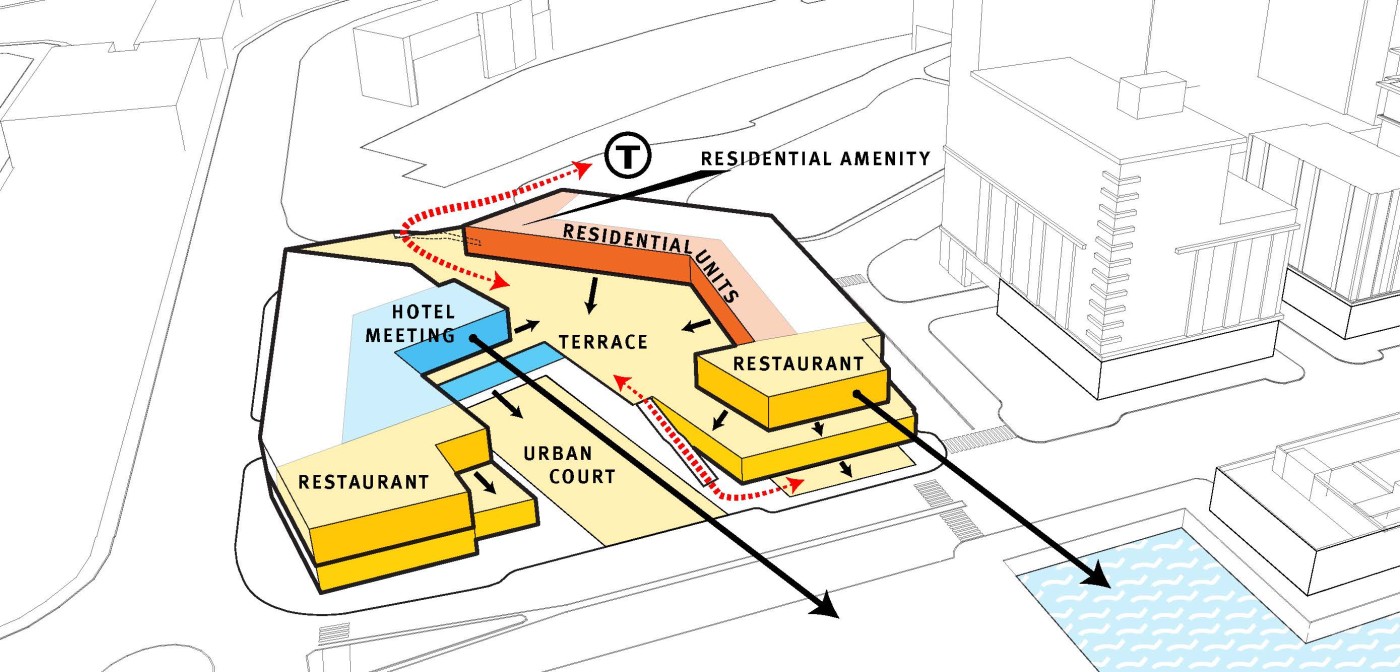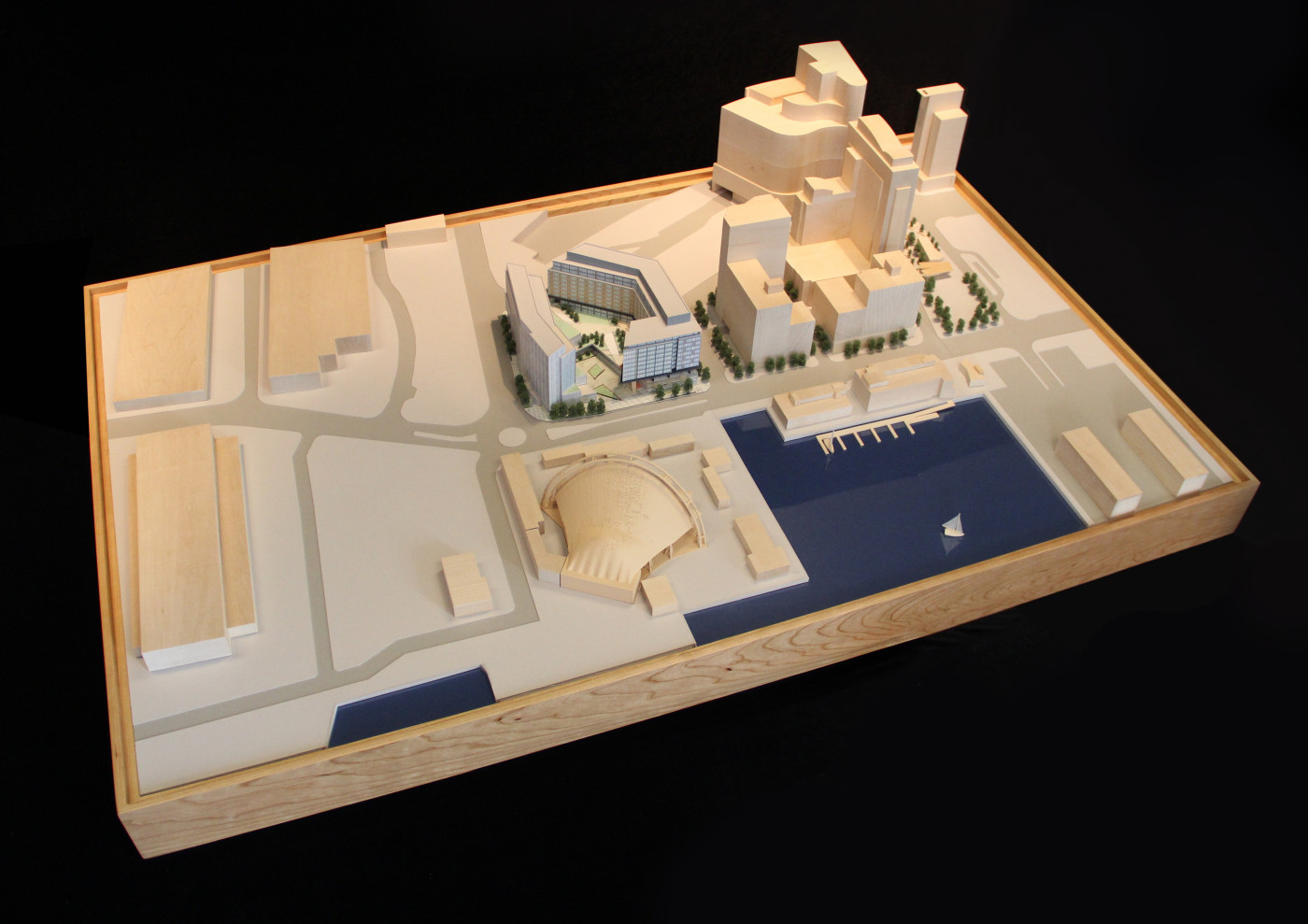
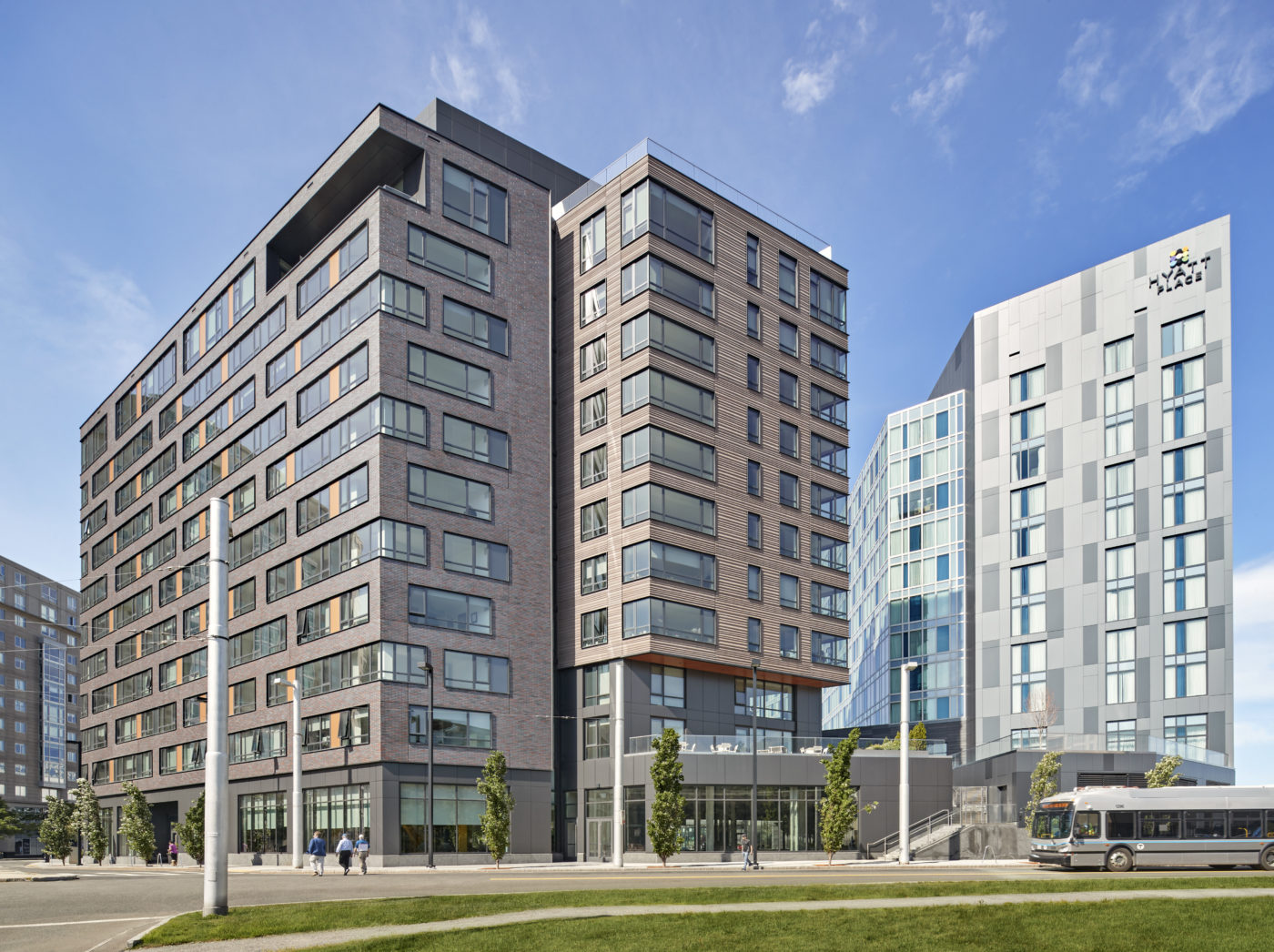

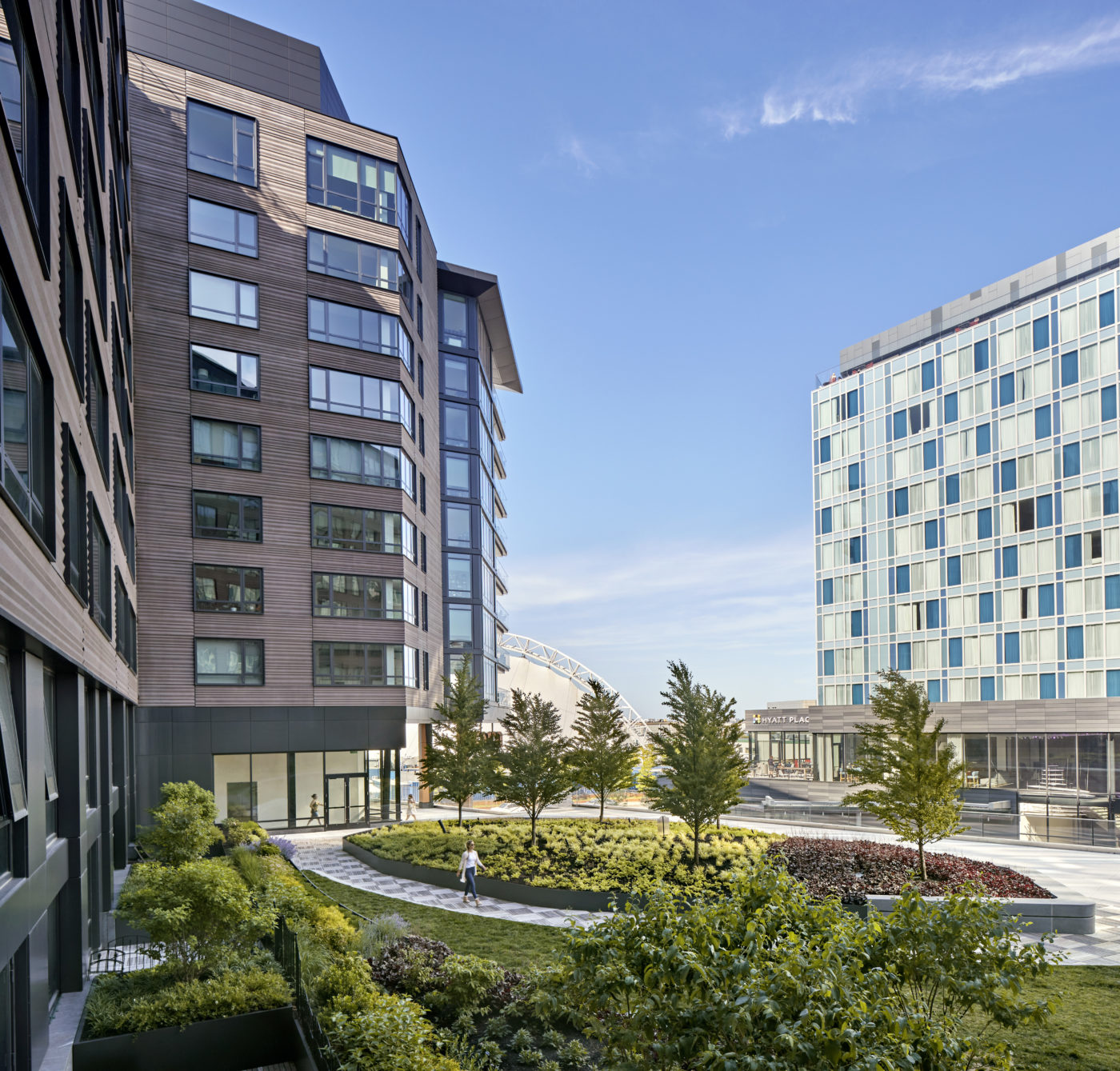
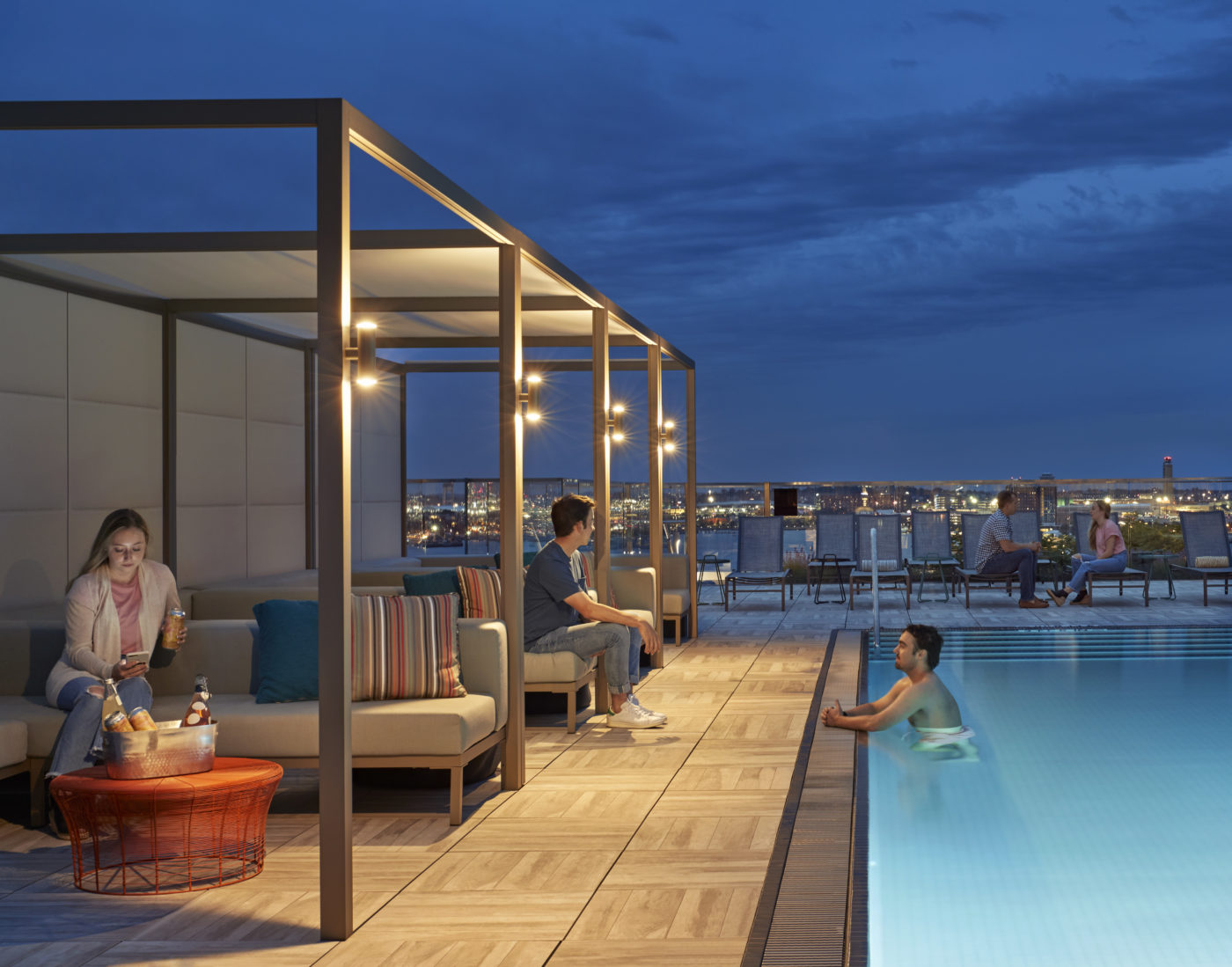
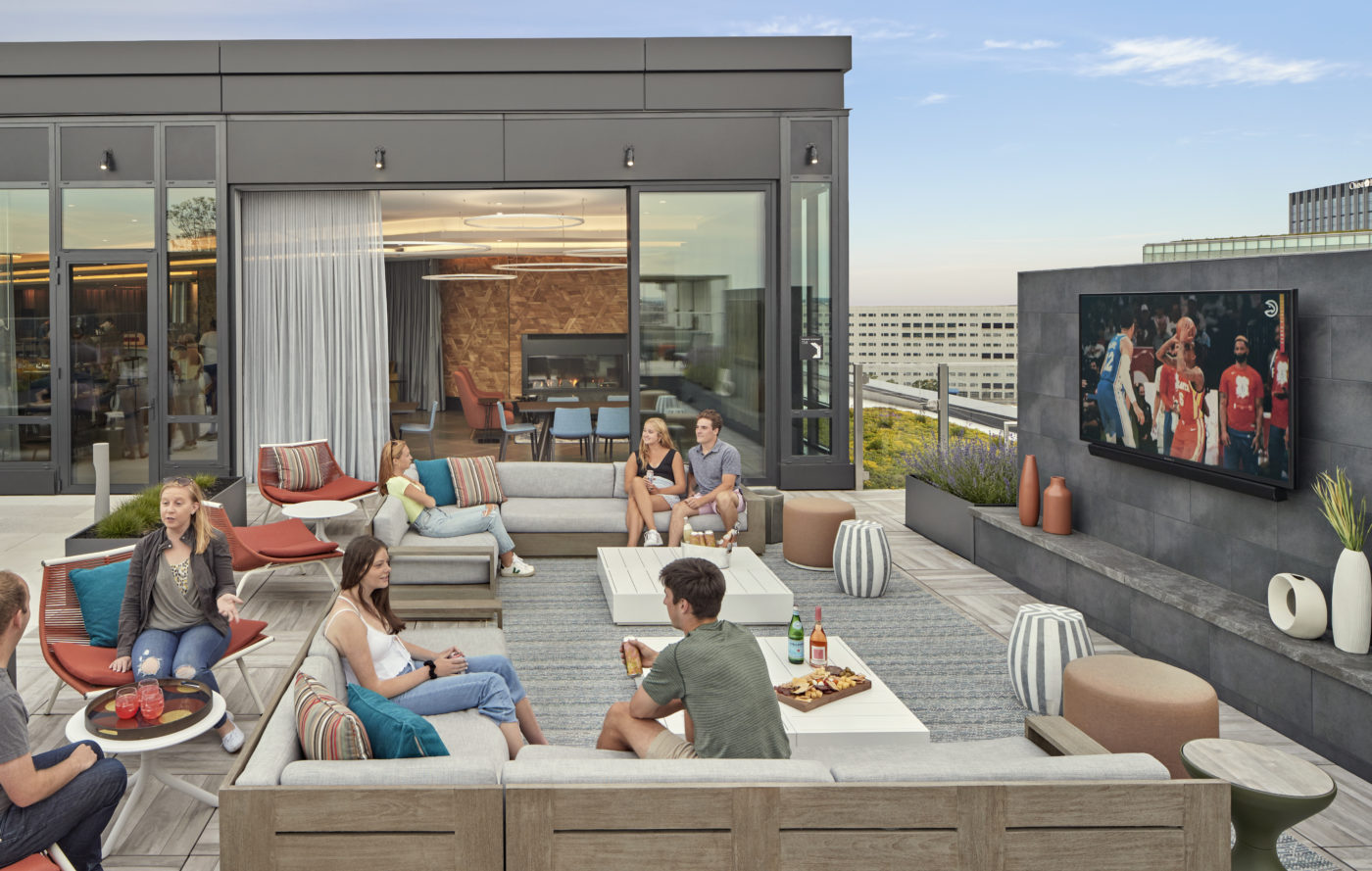


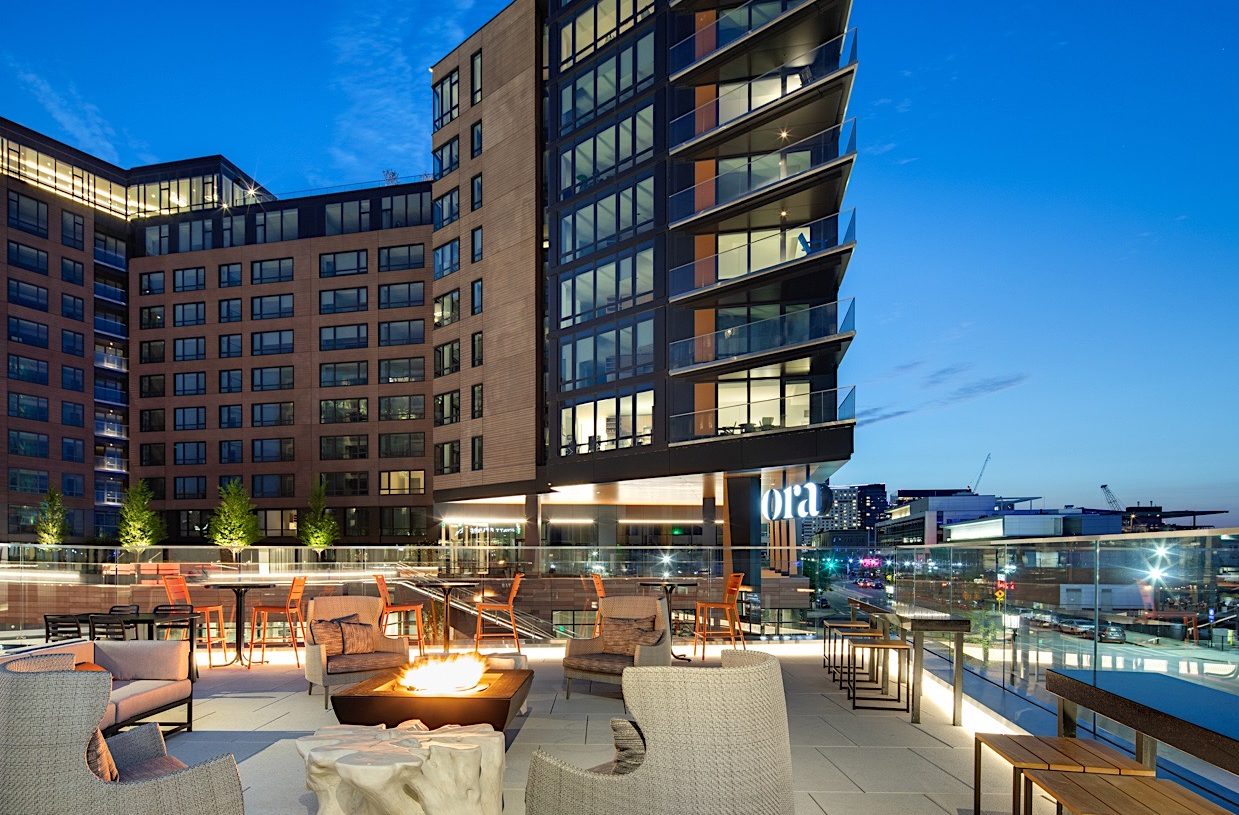
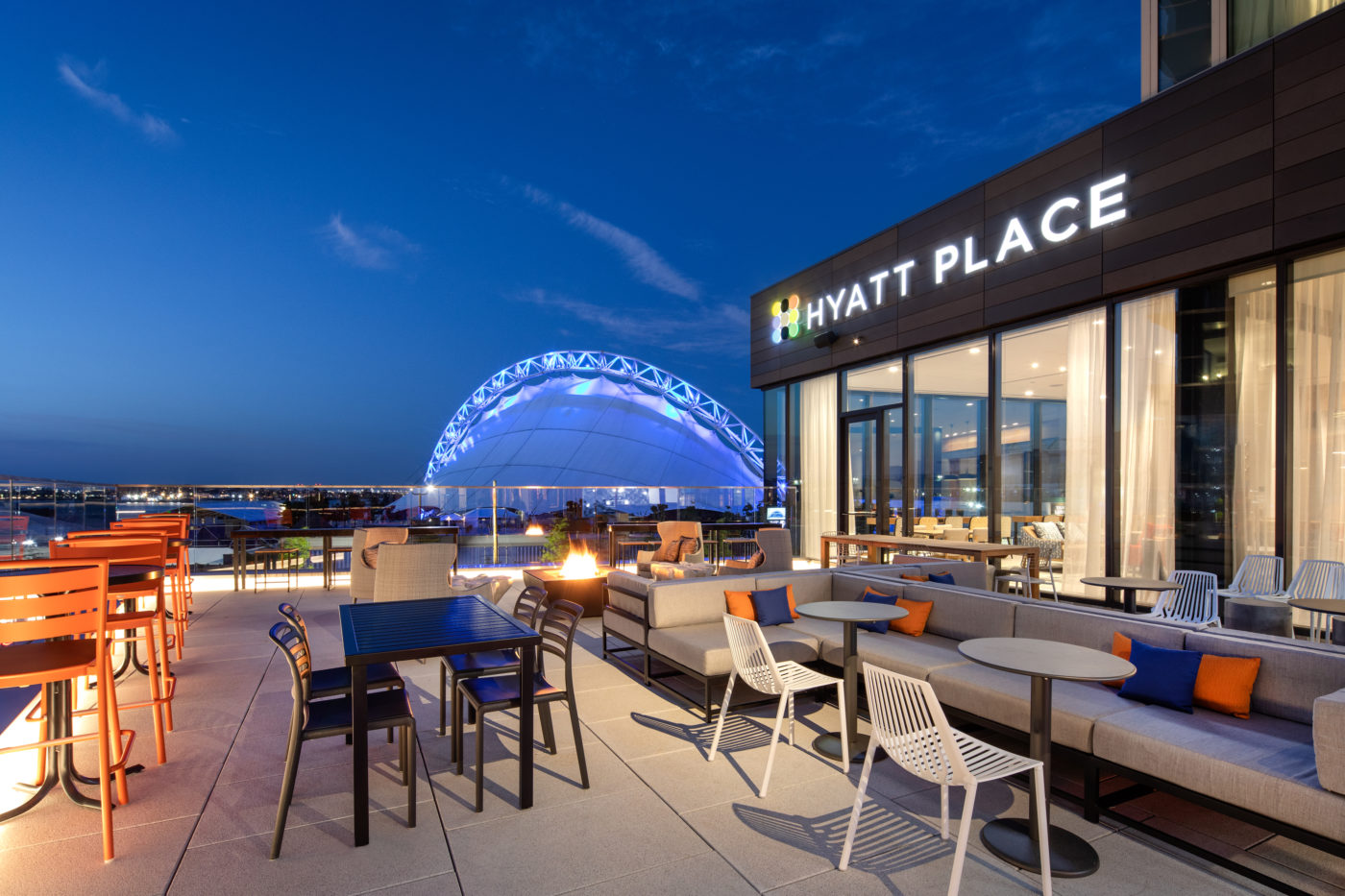

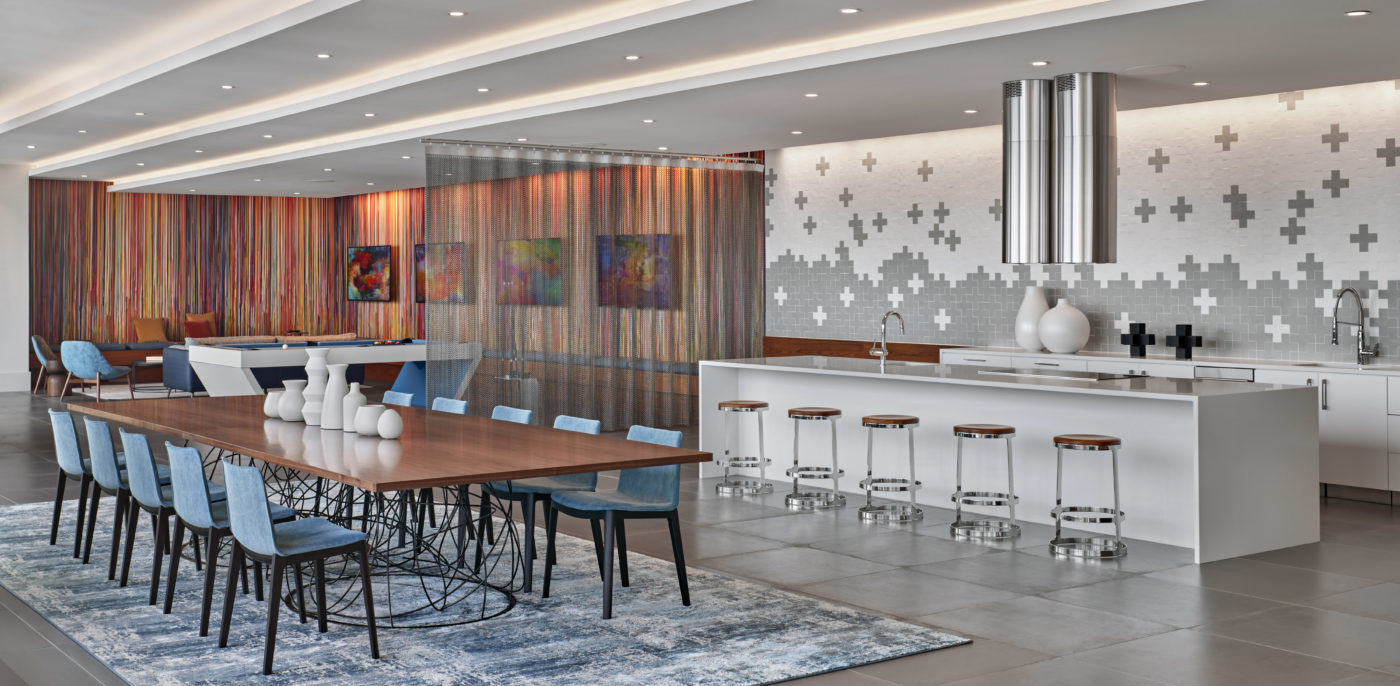
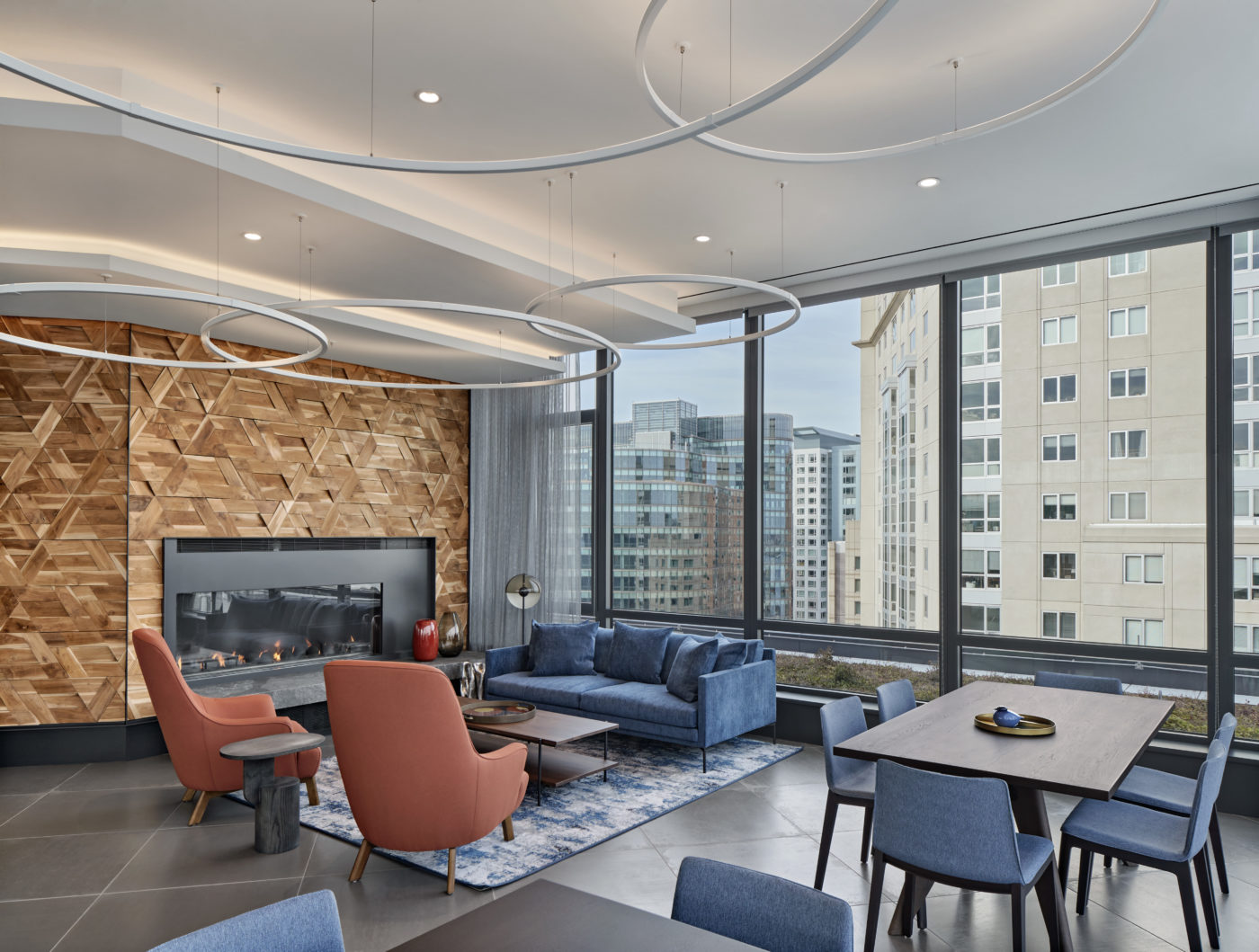

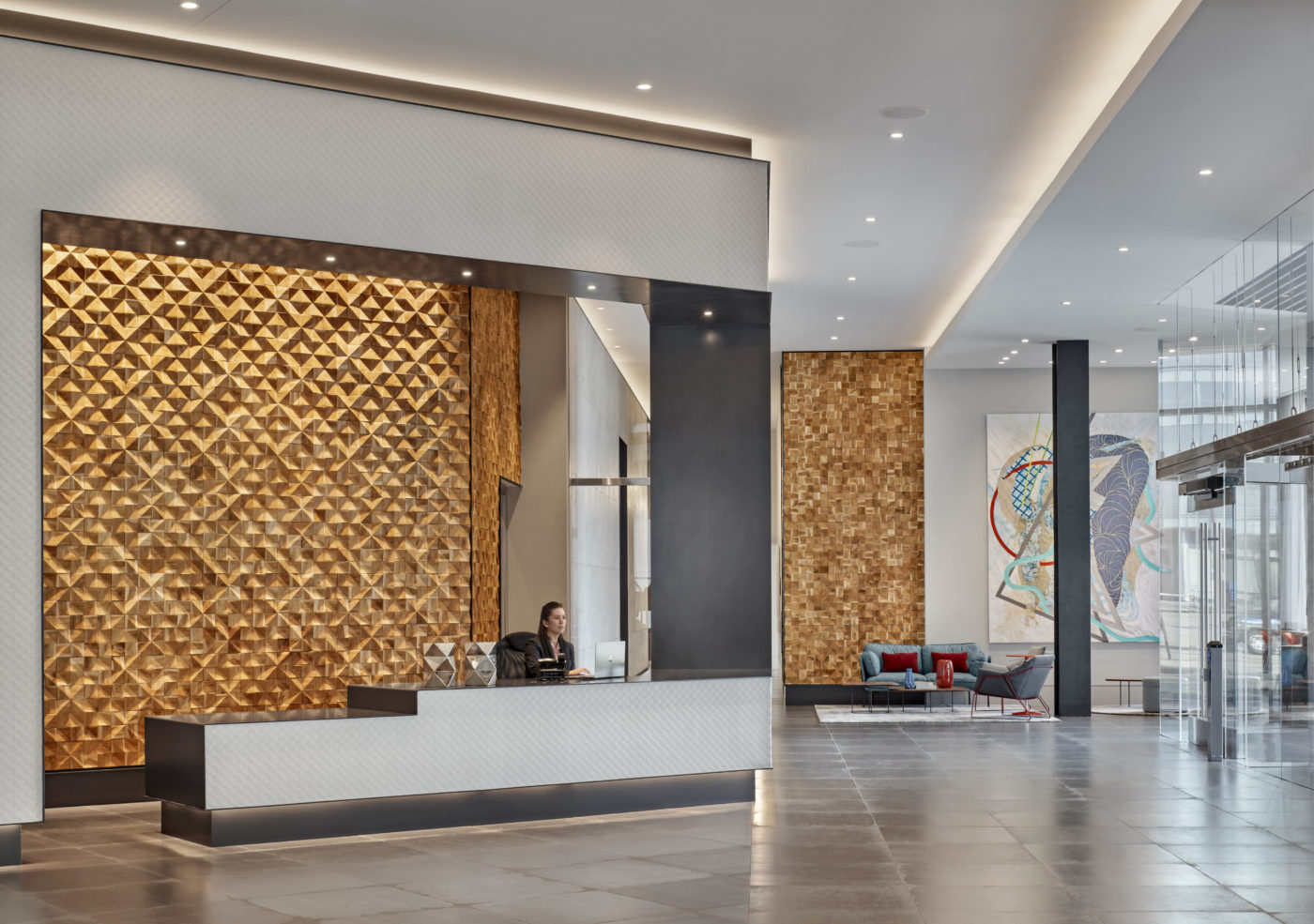

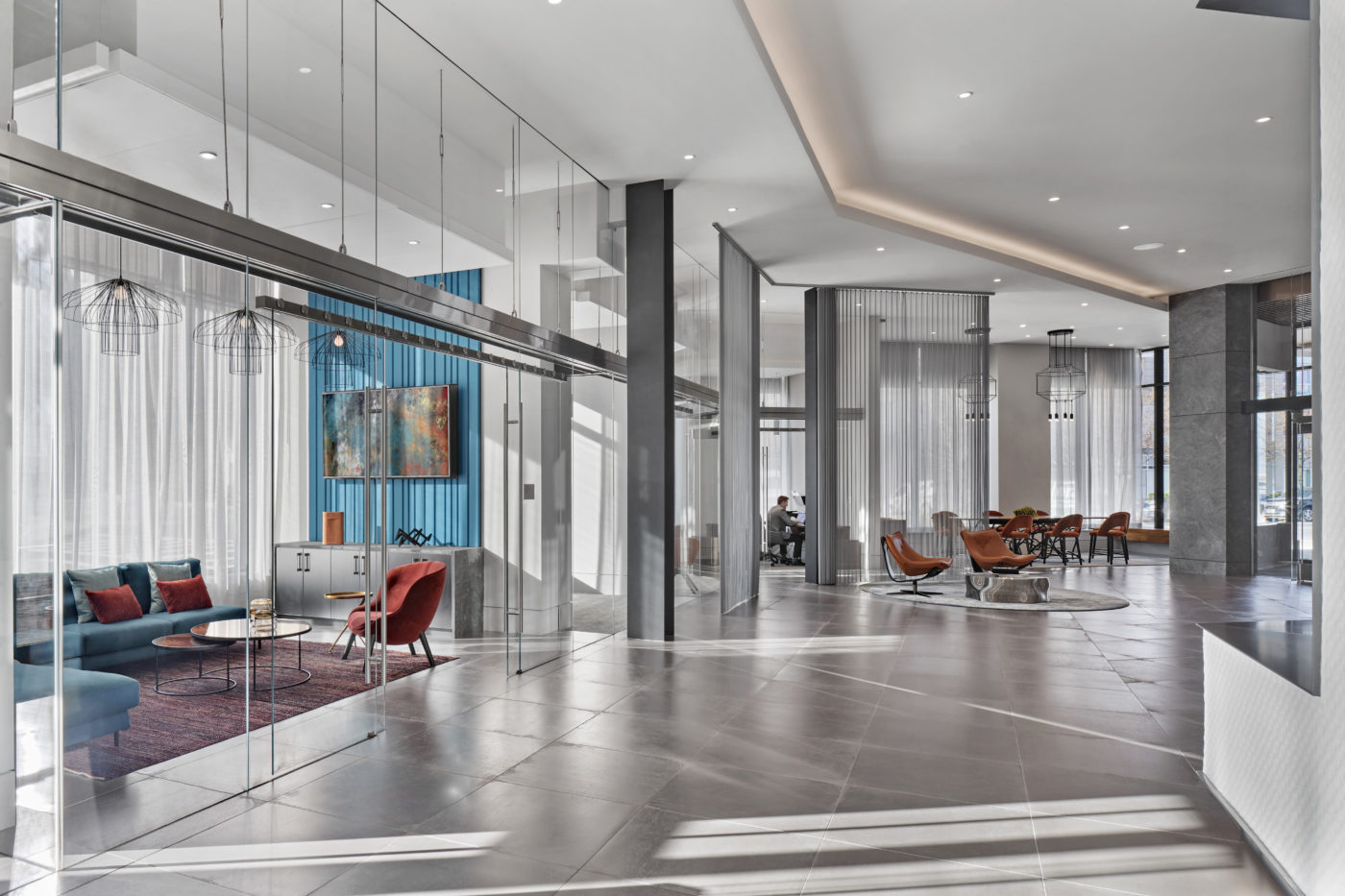
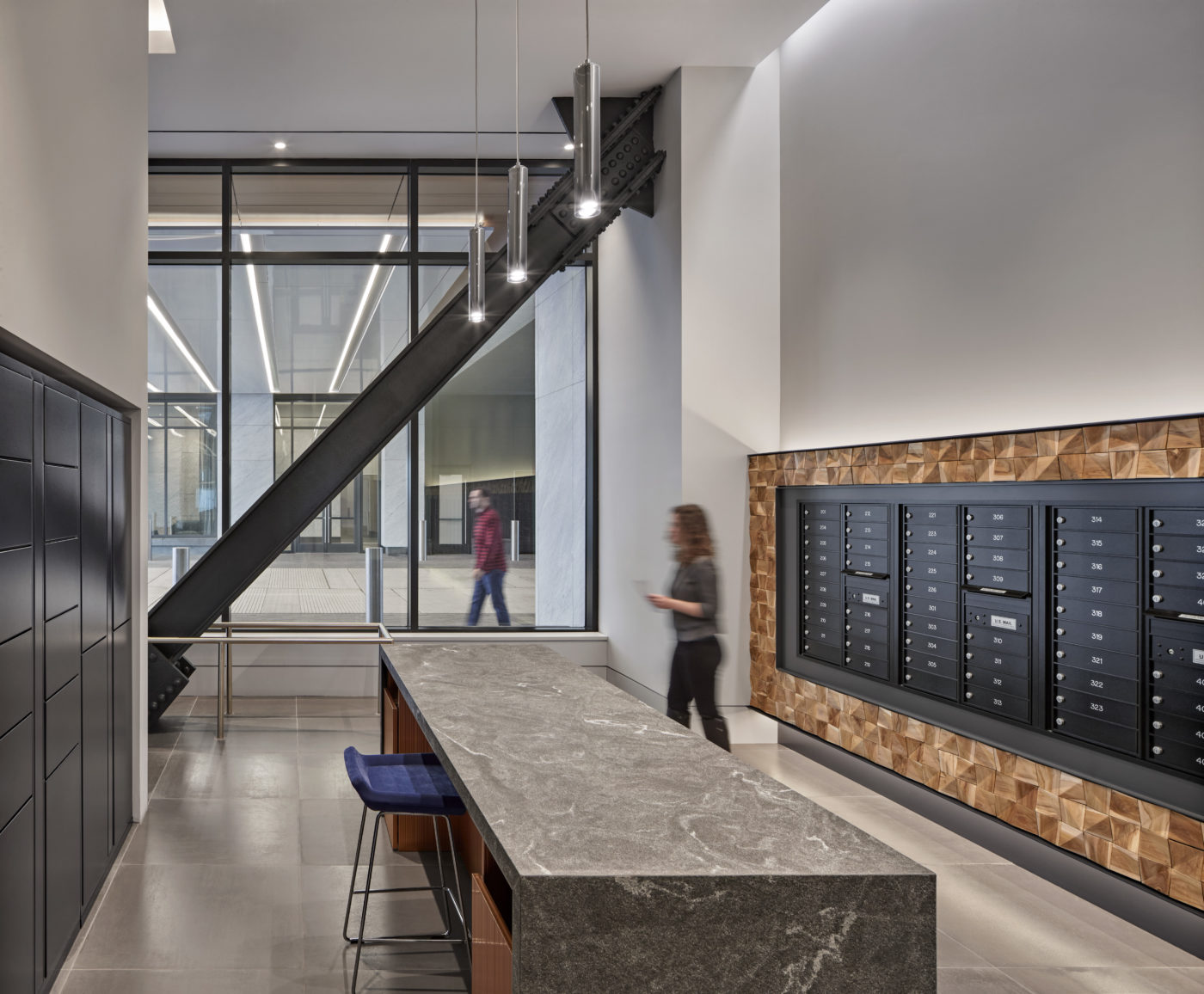
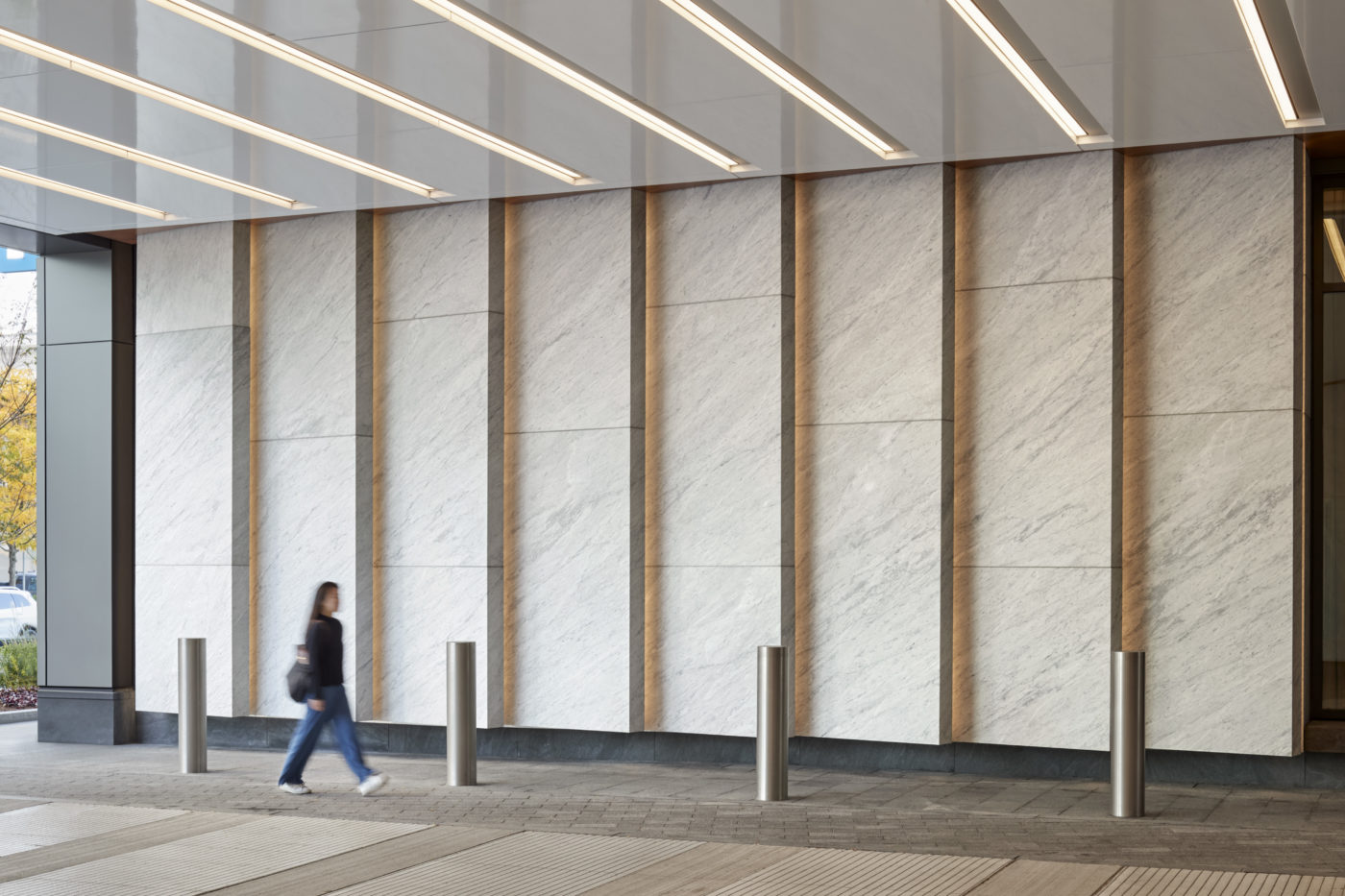



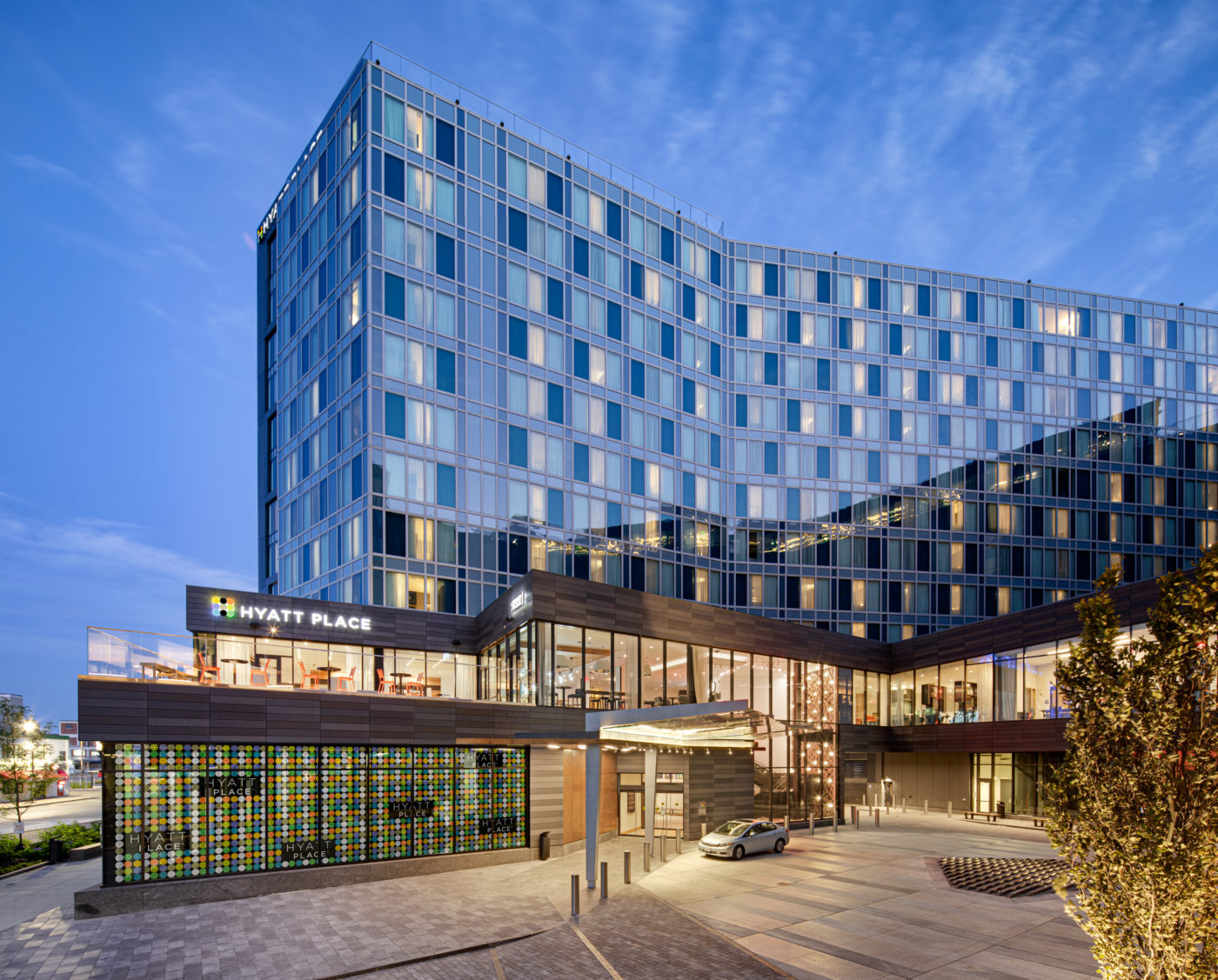




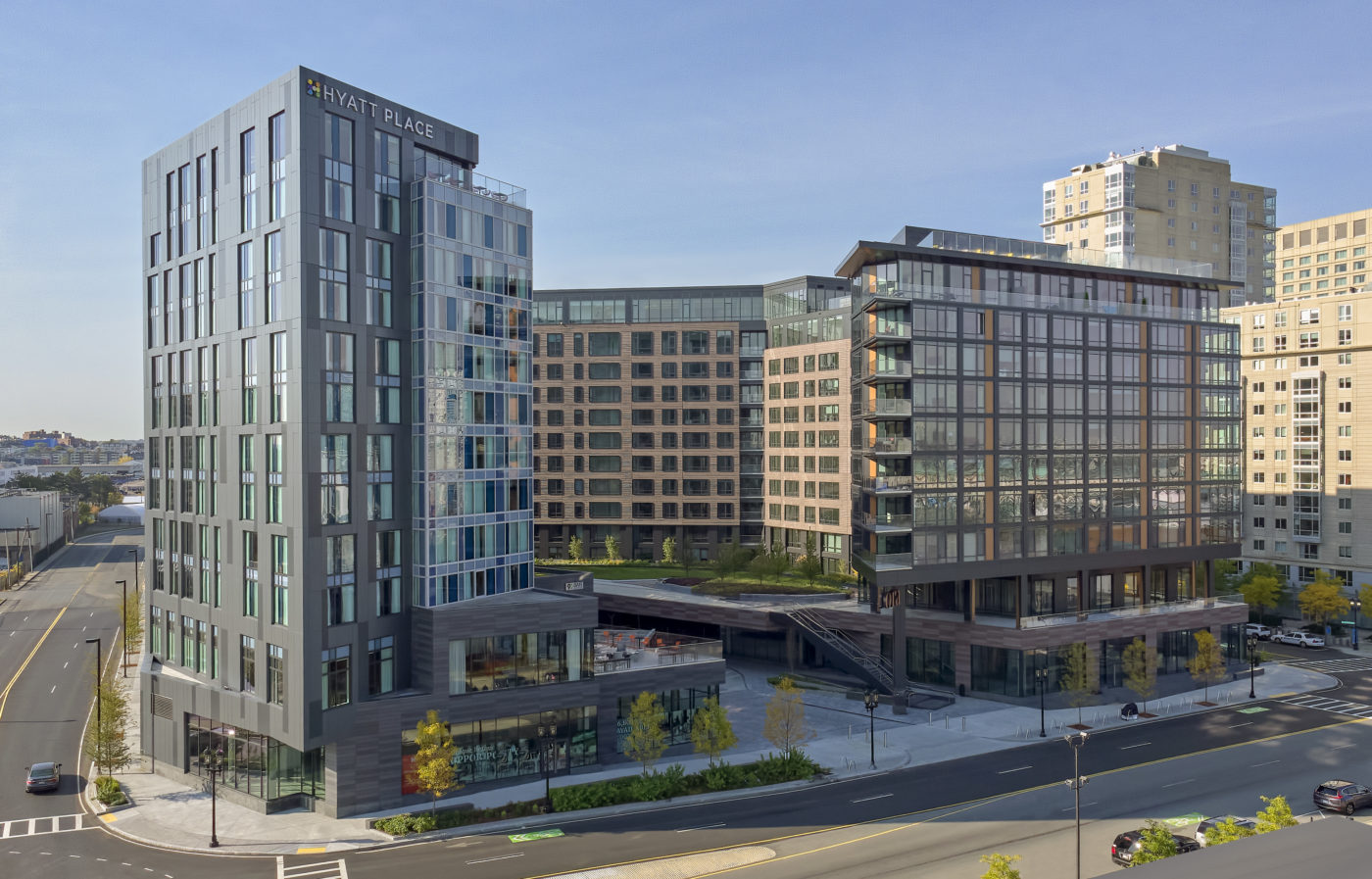
Residential & mixed-use waterfront development in Boston’s Seaport District
Arrowstreet is the master planner and architect for this vibrant 500,000 square-foot waterfront development in Boston’s Innovation District. A primary focus of this development is to set a standard for community-oriented urban design that addresses the resiliency challenges of building along the waterfront. The thoughtful balance of uses integrates 304-units of rental housing, a 297-key boutique hotel, flexible office space, restaurants, and retail. The rental units provide sweeping water views from an array of unit types, including micro-units, studios, and one- and two-bedroom apartments.
With resiliency measures a critical consideration, the interior and exterior architecture celebrate the site’s proximity to the water. Designed as an experience, the building comprises a sequence of spaces that unfold, revealing themselves to you navigate from the interior to exterior. A monumental outdoor staircase and a significant structural cantilever frame a sizable terrace above the ground floor restaurant space and maximizes the rentable square footage of the building. Outdoor rooms, coupled with a series of roof decks, create a vertical neighborhood on the building façade and a dynamic street edge to take advantage of water views and a popular performance pavilion across the street.
Landscaping elements such as planters, sloped walks, and walls that can double as outdoor seating integrate into the raised entry areas and seamlessly raise the ground floor’s elevation to further protect it from flooding. These passive systems eliminate the need for more traditional deployable flood barriers and fences that would require assembly around the entire building.
Resiliency measures to address critical storm surge and rising sea levels have been integrated into the site design and building façade to minimize the operational costs and protect the development during the event of flooding. The project is the first within Boston to use passive flood barrier gate technology. The gate is activated by rising water with the floodwaters creating hydrostatic pressure to float the buoyant aluminum beam and flip it into a vertical position. This process also activates the self-sealing rubber gaskets located at both ends of the gate.
For the foundation, the design team evaluated the typical three-level below-grade garage with slurry wall and worked with the General Contractor to achieve a significant cost and schedule savings with a 1-story below-grade parking and deep piles. This design accommodates a higher number of vehicles within a smaller footprint through valet operations and alternative parking plans.
During the design phase, virtual and augmented reality simulations were created to illustrate potential sea-level rise scenarios. These visuals assisted the client in understanding the probable flood impacts on the development.
Project Details
location
Seaport District, Boston, MA
SIZE
500,000 SF
CERTIFICATION
Hyatt Place – LEED Silver
Ora Seaport – LEED Silver
Awards
ICSC Global Design & Development Awards
Sustainable Commendations, 2023
New Developments: Mixed-Use Projects, Finalist, 2023
ArchFrame Design Awards
Built Environment Plus
CREW Boston
Achievement Award, Networking, 2020
The Architecture Community
Related News
-
 ORA Seaport is a 2021 ArchFrame Design Awards Gold Winner
ORA Seaport is a 2021 ArchFrame Design Awards Gold Winner -
 Ora Seaport has been awarded the Site & Landscape 2021 Built Environment Plus Award at the Green Building Showcase
Ora Seaport has been awarded the Site & Landscape 2021 Built Environment Plus Award at the Green Building Showcase -
 Ora Seaport Receives CREW 2021 Networking Award
Ora Seaport Receives CREW 2021 Networking Award -
 Ora Seaport Winner of Architect of the Year 2020
Ora Seaport Winner of Architect of the Year 2020 -
 Ora Brings a New Way of Urban Living to the Seaport Waterfront
Ora Brings a New Way of Urban Living to the Seaport Waterfront -
 Future-Proofing Through Design
Future-Proofing Through Design -
 Hyatt Place Grows North American Footprint
Hyatt Place Grows North American Footprint -
 Massport paves way for new Seaport hotel and apartment complex
Massport paves way for new Seaport hotel and apartment complex -
 Built to Last
Built to Last -
 Hyatt breaks ground on mixed-use Boston Seaport hotel
Hyatt breaks ground on mixed-use Boston Seaport hotel -
 Cambria Expands in the Midwest and South; More Developments…
Cambria Expands in the Midwest and South; More Developments…
Related Projects
Architectural Plans / Process


